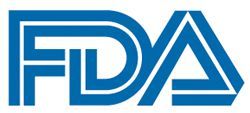News
Article
FDA Completes End-of-Phase 2 Meeting for Annamycin Plus Cytarabine in AML
Author(s):
Moleculin Biotech completed an end-of-phase 2 meeting with the FDA regarding the investigation of annamycin plus cytarabine in acute myeloid leukemia.
FDA

Moleculin Biotech has completed an end-of-phase 2 meeting with the FDA regarding the investigation of annamycin (MB-106) in combination with cytarabine for the treatment patients with acute myeloid leukemia (AML).1
During the meeting, the company and the FDA discussed results from a phase 1b/2 trial (NCT05319587), which is evaluating the combination in patients with newly diagnosed or relapsed/refractory AML.
“The Moleculin team, along with our regulatory advisors and key opinion leaders, discussed with FDA the [annamycin] safety and efficacy clinical findings and proposed next steps for our AML clinical development program,” Walter Klemp, chairman and chief executive officer of Moleculin Biotech, stated in a news release. “We are grateful to the FDA for what we consider to be a very productive meeting and look forward to reporting its outcome before the end of August.”
Findings from the phase 1b/2 trial presented at the 2024 EHA Congress showed that efficacy-evaluable patients (n = 20) in the intention-to-treat (ITT) population experienced a composite complete remission (CRc) rate of 45%, including a CR rate of 40% and a CR with incomplete count recovery (CRi) rate of 5%. Notably, patients in the ITT population were receiving annamycin plus cytarabine as early as the first line and as late as the seventh line. Among the 9 patients who achieved a CRc, the median duration of response was approximately 7 months and is increasing with additional follow-up.
Two additional patients were enrolled onto the study and treated; however, their efficacy outcomes are pending.
Patients who received annamycin plus cytarabine in the second-line setting (n = 10) achieved a CRc rate of 60%, including a CR rate of 50%. Among those treated in the first- or second-line settings (n = 13), the CRc and CR rates were 62% and 54%, respectively.
The ongoing, multicenter, open-label phase 1b/2 study is enrolling patients at least 18 years of age with pathologically confirmed AML per World Health Organization classification. Patients are allowed to be naive to prior therapy or have relapsed/refractory disease after induction therapy. During the dose-expansion portion of the study, patients are not allowed to have received more than 2 prior therapies.2
Other key inclusion criteria include adequate laboratory results and an ECOG performance status of 0 to 2. No chemotherapy, radiation, or major surgery are permitted within 2 weeks of first study treatment, and any investigational therapy is not allowed within 4 weeks of enrollment.
Key exclusion criteria consist of acute promyelocytic leukemia; prior mediastinal radiotherapy; central nervous system involvement; a left ventricular ejection fraction of less than 50%, valvular heart disease, or severe hypertension; and any evidence of mucositis/stomatitis at enrollment or a history of grade 3 or higher mucositis from prior therapy.
All patients are treated with intravenous annamycin for 3 consecutive days, followed by 18 days off treatment, during each 21-day cycle. Cytarabine is being administered during cycle 1 at 2.0 g/m2 per day for 5 consecutive days.
The incidence of dose-limiting toxicities and the establishment of the maximum tolerated dose and recommended phase 2 dose were the study’s primary end points. Secondary end points included pharmacokinetics and anti-leukemic activity.
The median age of patients in the ITT population was 69 years. Notably, 89% of patients who achieved a CRc had cytogenetics and/or mutations associated with poor prognosis, including FLT3, IDH2, ASXL1, KMT2A and other alterations.3
Safety data showed that 2 patients discontinued treatment early due to allergic reactions. No clinically significant signs of cardiotoxicity were observed during or after treatment in any patients. Annamycin plus cytarabine was well tolerated, and the most common adverse effects were myelosuppression and infections.
The FDA previously granted fast track and orphan drug designations to annamycin for the treatment of patients with relapsed/refractory AML, and the European Medicines Agency also awarded orphan drug designation to the agent in this indication. The FDA also granted orphan drug designation to annamycin for the treatment of patients with soft tissue sarcoma.1
References
- Moleculin completes end of phase 2 meeting with FDA for annamycin in AML. News release. Moleculin Biotech. July 10, 2024. Accessed July 15, 2024. https://moleculin.com/moleculin-completes-end-of-phase-2-meeting-with-fda-for-annamycin-in-aml/
- Study of liposomal annamycin in combination with cytarabine for the treatment of subjects with acute myeloid leukemia (AML). ClinicalTrials.gov. Updated November 18, 2023. Accessed July 15, 2024. https://clinicaltrials.gov/study/NCT05319587
- Moleculin announces additional positive preliminary interim data from AML clinical trial. News release. Moleculin Biotech. June 14, 2024. Accessed July 15, 2024. https://moleculin.com/moleculin-announces-additional-positive-preliminary-interim-data-from-aml-clinical-trial/









